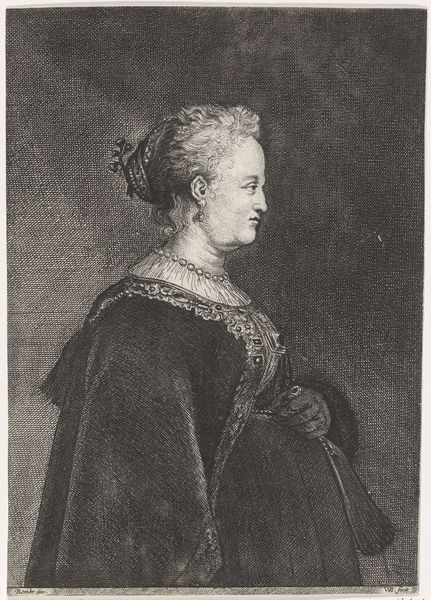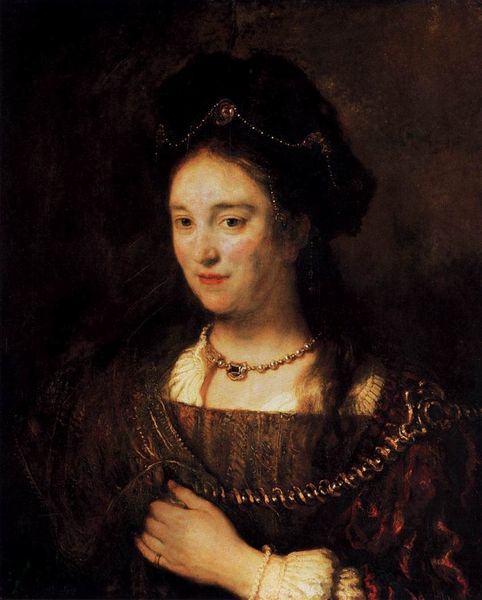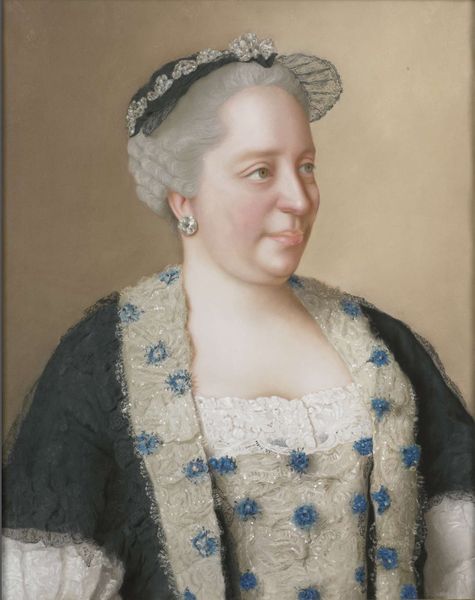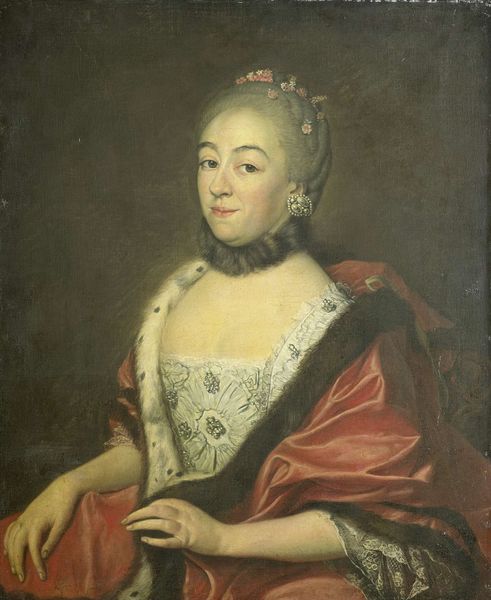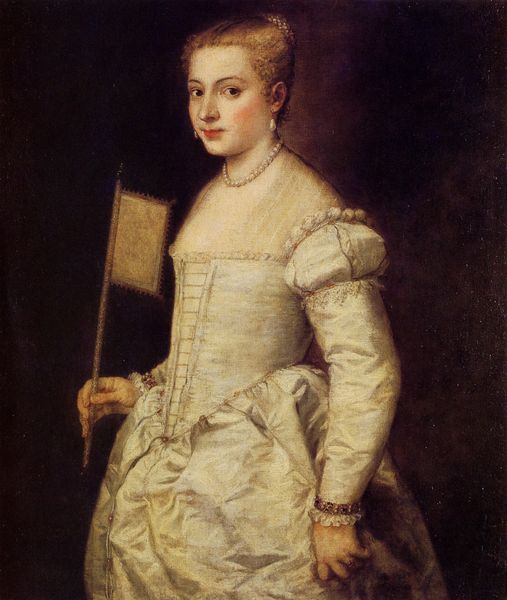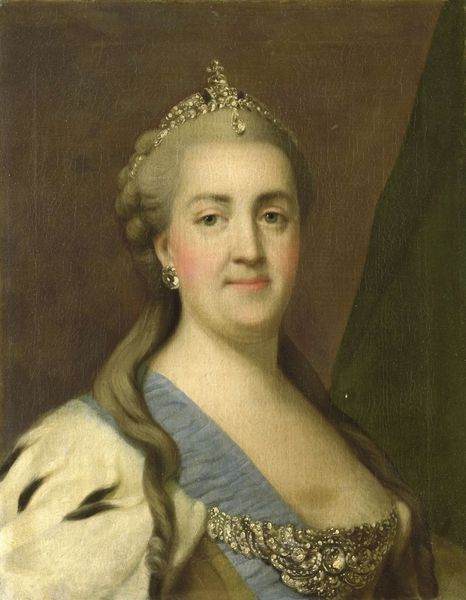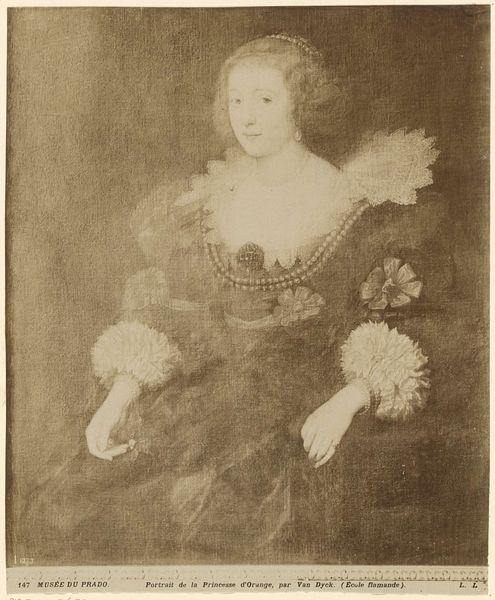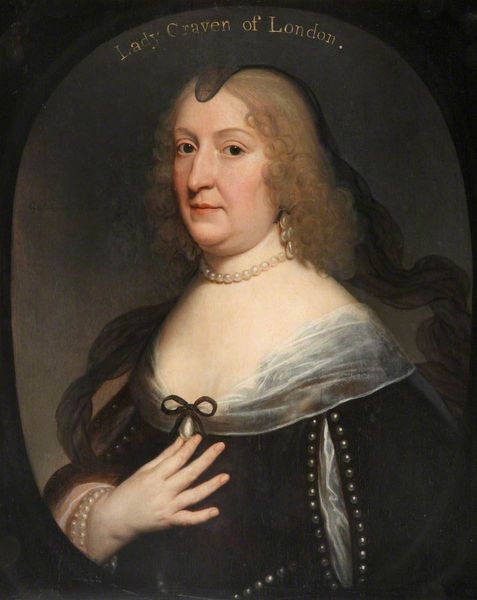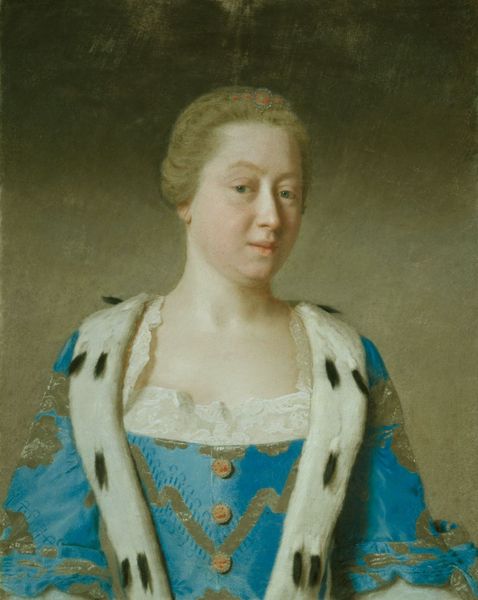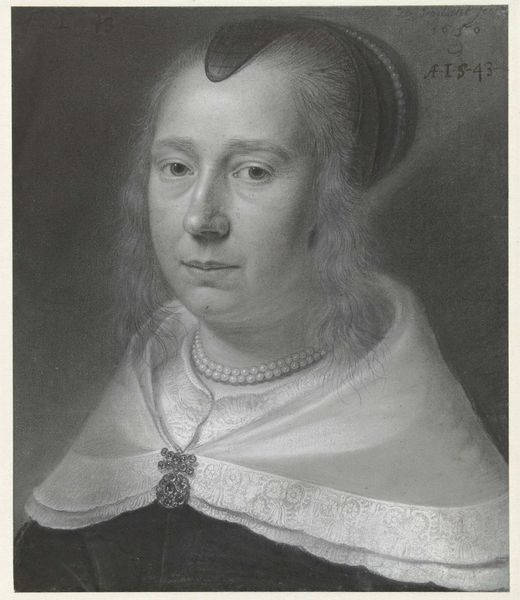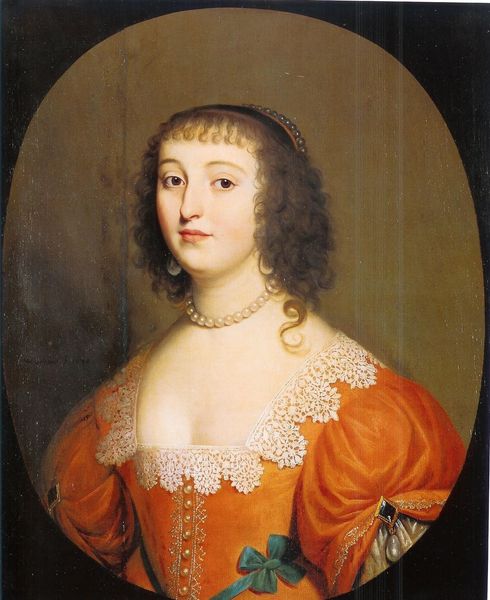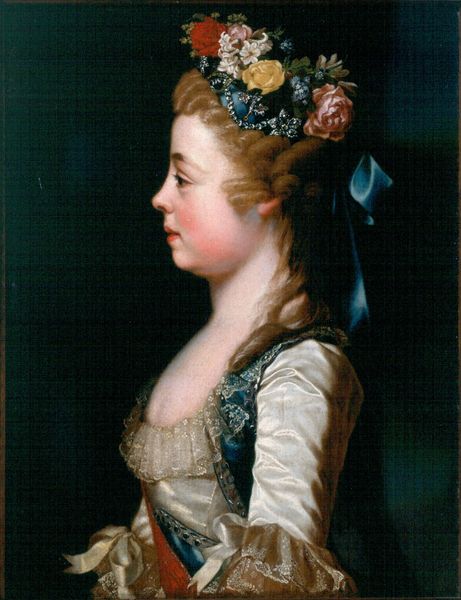
Portrait of Princess Amalia van Solms 1632
0:00
0:00
rembrandtvanrijn
Musée Jacquemart-André, Paris, France
painting, oil-paint
#
portrait
#
self-portrait
#
baroque
#
dutch-golden-age
#
painting
#
oil-paint
#
figuration
#
history-painting
#
realism
Dimensions: 69 x 54 cm
Copyright: Public domain
Rembrandt van Rijn painted this portrait of Princess Amalia van Solms, using oil on canvas. During the Dutch Golden Age, portraiture was often used to convey social status and power. Here, Amalia van Solms, a woman of significant influence as the wife of Prince Frederick Henry of Orange, is depicted with the kind of composed dignity that was befitting her position. However, Rembrandt departs from traditional portrayals of nobility by offering a glimpse of Amalia's human dimension. The details in her attire—the delicate lace collar, the subtle pearl jewelry—speak to her wealth and status. Yet, Rembrandt’s handling of light and shadow brings forward a sense of her inner life, hinting at the complexities of her role and the expectations placed upon her as a woman of power in the 17th century. Rembrandt's portrait invites us to consider the intersection of personal identity and public image, particularly for women in positions of power during this time.
Comments
No comments
Be the first to comment and join the conversation on the ultimate creative platform.

